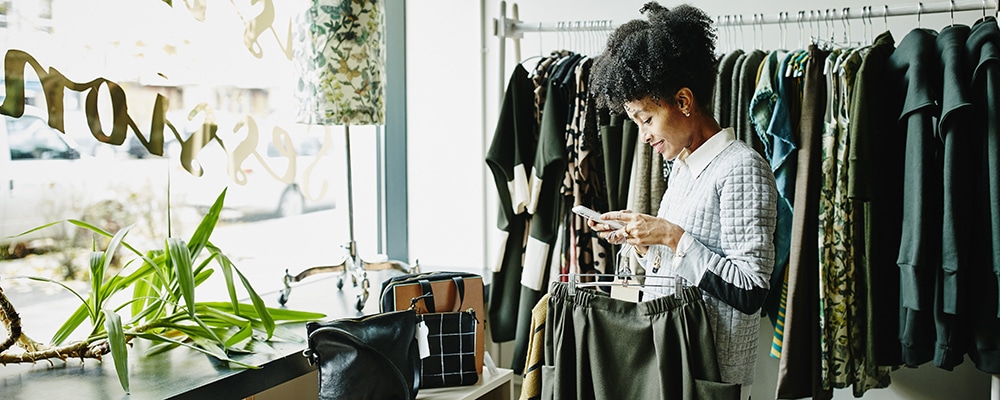Responsible practice within the fashion industry, transforming brands and retailers on the way.
Circular Economy, a term coined over 15 years ago, is a modern systems thinking initiative developed to help industries adopt environmentally sustainable and responsible practice in manufacturing. Many Australians are aware that the fashion industry is the second largest polluting sector in the world (next to oil and gas) – however the apparel industry’s prehistoric manufacturing framework is adaptable.
We’re looking to overcome outdated practice by creating new-age textiles to facilitate a modern approach in revolutionary apparel production. Australia’s newest fashion advisory body, Australian Circular Textile Association (ACTA), is working with brands to plan and facilitate new recycling phases to process fashion waste and help close the loop on take-make-waste.
Sustainability, the new ‘it’ word synonymous with fashion, refers to the effects of apparel pre-and-post production on the environment. Generally most of us are unaware that it takes over 200 processes to produce a piece of fabric and dying fabric users over 5 trillion liters of water (2 million olympic sized swimming pools!).
Much of the information on responsible best practice is difficult to digest for many of us however, ACTA is looking assist Australia and New Zealand’s largest retail brands in redefining their core values (social, economic, environmental and community) to align with sustainable practice.
Globally a good business measures their success not only by financial performance, but also by their social and environmental impact. Therefore, the goal of fashion retailers is to find a balance between these factors.
There are five key points, which retailers and brands can adopt in their next step toward supporting sustainable and responsible fashion.
1. Remember your core DNA
Goals and values are the two strongest attributes in building a strong foundation, they uphold the businesses sustainability pillars both short-term and long-term. In redefining a vision, it’s best to start by considering if the business has any core values, particularly for planning a long-term strategy within the market, over the next 5-10 years. A clear value proposition naturally transgresses to aligning the company’s new goals, and the best way is to create a roadmap with detailed touch points to achieve optimal market benefits and navigate risks. Ultimately, the clear path for best practice sees the retailer’s sustainable pillars; social, economic, environmental and community, reflecting the re-energised goals and values.
2. Building Foundations
Every business is a different size and has a different identify, therefore each one custom builds strategies to ensure growth and revenue stability. Delivering sustainability based business models is crucial however, new strategies must be created based on the modern values identified to represent best practice and ensure long-term economic viability.
3. Maintaining Structure
Operation and organisation within a business represents the systems in place to help employees gauge sustainable practice. After all employees are the biggest advocates for living and breathing the company’s values. Therefore, it’s important to consider what performance indicators assist with new initiatives including, take-back programs, mending/repair workshops, sustainable fabric sourcing and customer education.
Further, sustainable business systems can be broken down internally and externally. Internal systems are the guidelines for employees to begin thinking of innovative methods in every aspect of their role; be it designing products with less environmental impact, assessing the treatment processes through the manufacturing phase, considering responsible waste solutions and new sustainably produced materials. External systems on the other hand can seem complex as there’s cooperation with third parties and other business partners throughout the whole supply chain. Therefore assessing the current supply chain can highlight the barriers to change, educate staff and influence values within a workplace culture.
4. Future consumer
Take advantage of increasing social trends and awareness for responsible environmental impact. A company should be establishing a clear marketing position that reflects the goal commitments. Can a brand’s position be telling a story or sharing its pledge for a more prosperous future? It’s important retailers to take into consideration their product’s impact and how their wider audience is engaging with their message. The new decade sparks a tipping point for corporate social responsibility, consumers are not longer looking to support brands that don’t align with their personal values and most importantly identity. A new transformative era to adopt sustainable ideals will accelerate companies to elevate their purpose, which equals making more profit.
5. New model, new mindset
Collaboration should be a priority, the ability to access mutually beneficial partnerships and networks between companies demonstrates action. It’s counterproductive for an industry to work in silos – power comes from numerous companies working inclusively towards positive change. At the forefront of positive change is the need for open source information and collaboration. The most successful businesses in the world didn’t end up in this position by operating in silos. There’s a fantastic community in Australia looking to help support the industry and are excited for retailers to become an integral part of the movement.
There’s never been a greater time to connect with like-minded individuals in the marketplace. Remember the goal is building values internally and externally and create customer awareness of your brand to support your vision and create a great future for sustainable retail.
Known in the industry for her can-do attitude, with a feverous passion for recycling and sustainability, Camille Reed is actively pursuing her goals, the founder of The Australian Circular Fashion Conference. ACFC is an annual event supporting the AU+NZs fashion industry in becoming self-sufficient with sustainable practice. Learn more about Camille’s ambition in sustainable fashion at australiancircularfashion.com.au




















